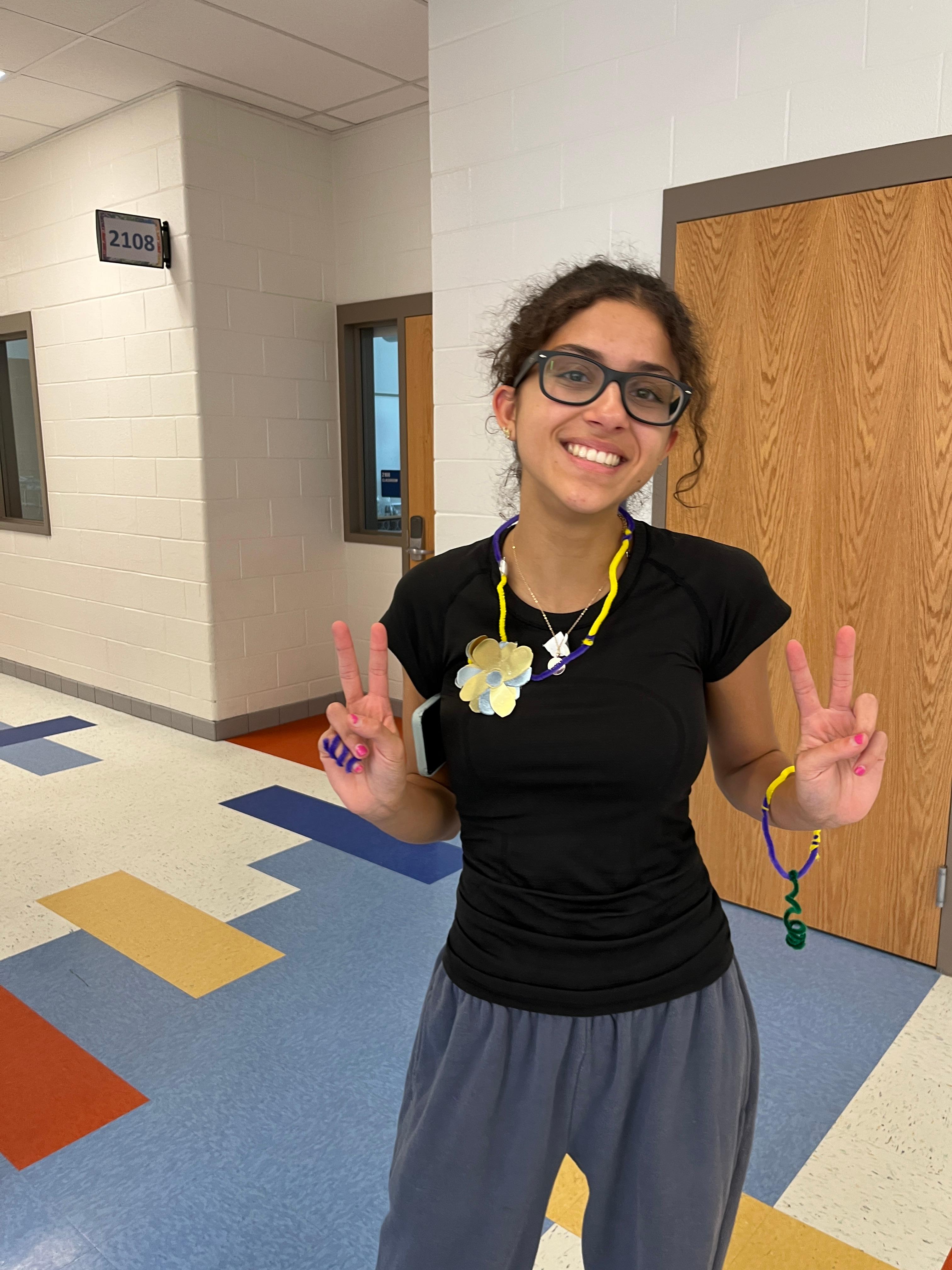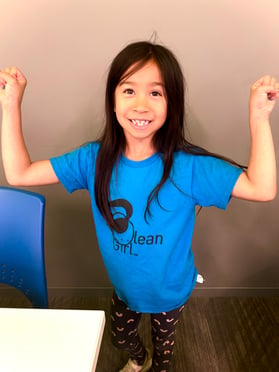
While the gender gap in STEM careers has improved significantly since the 1970s, progress has slowed in recent years, especially in the areas of computers and engineering. According to a recent Gallup poll, engineering and computers and technology led all fields with the largest gender gap among Gen Z at a whopping 28% difference between men and women pursuing these types of careers.
According to the study, Gen Z females are reporting that they are less likely to be interested in STEM topics and careers when they reach high school and college. But why? And how do we fix that trend?
As STEM careers only grow in importance in the digital age, it is vital we shift this trend to get better representation across the board in an industry that will in many ways determine the trajectory of our futures.
We created Boolean Girl in 2014 to help address this issue. Throughout the years of working directly with girls and young women with an interest in computer science and engineering, we gathered feedback from our students, parents, and teachers to better develop programs. This year, we combined that qualitative data with an external survey conducted by The Million Girls Moonshot to help uncover key ways to combat the declining trend of women in STEM fields.
The Confidence Problem
The Gallop research shows that “confidence in one’s own STEM ability differs significantly by gender.” Fifty-seven percent of Gen Z females say they are not interested in STEM careers because they don’t think they would be good at it, as opposed to 38% of boys. Children gain confidence through trying and achieving. To combat the gender gap in STEM careers, we must build confidence in girls and young women in these fields by providing them with more opportunities to succeed.
How to Create Better Opportunities for Girls in STEM
Over the years, we have uncovered a set of six fundamental techniques that help us create better opportunities and build confidence for girls in STEM.
AGE
Think of learning STEM as learning a new language. You don’t start learning a new language in College. Similarly, college is simply too late to start learning to code. In fact, we believe that high school is too late. Just like learning a language, it is important to learn to code and explore your interest in engineering early. We start in third grade.
When kids learn to code together through fun games and projects, they learn to experiment and be creative. This helps them develop confidence in their coding abilities from an early age.
ENVIRONMENT
Many coding and computer science courses today feature a predominantly male student population. If a young girl is interested in coding in middle school but is the only female in her class, that can shift her belief that coding is a field in which she will feel welcome and safe. If that girl decides to try it again in high school or college, and all of the boys in class are years ahead of her in skill, that can further diminish confidence.
At Boolean Girl, our camps are either just for girls, or in the case of co-ed camps, are still predominantly female with a goal that they be filled by over ⅔ girls. These girls learn together, work together, and become friends as their interest in STEM subjects grows.
CURRICULUM
Girls learn differently than boys. To keep Gen Z females interested in STEM topics, we need to teach them in the ways they learn best.
After teaching hundreds of girls in camps and schools, we’ve found a few broad themes.
- Girls prefer projects that have a story. They are less interested in skill-based video games (e.g., pong), while those are very typical coding projects for beginners. Instead of focusing on game building, we use code to tell stories and dive into art and other creative areas.
- Girls gravitate towards collaborative work. We have found that girls crave more complex projects where they can work together to develop solutions.
With curriculum designed with girls in mind, we see them opting in instead of opting out of these subjects.
ELECTIVES VS. INTEGRATION
STEM subjects such as computer science are typically taught as electives. This limits accessibility and takes away a fundamental component of STEM – integrating the skills and knowledge into other subject areas. We believe the best way to teach coding in schools today is to integrate it into traditional subjects like math, science, and literature. Rather than being pulled out of class to do coding, students use coding in their core classes to reinforce concepts in those subjects.
Boolean Girl is currently working with the Alexandria City Public Schools and District of Columbia Public Schools (DCPS) to do just this. Carla Ferris, Middle School teacher at Oyster-Adams in DC and parent of a Boolean Girl student, has been pioneering this strategy at her own school, collaborating with science teachers to create joint projects that incorporate coding, science standards, and math standards.
“It’s a great way to leverage existing interests that kids have and to pull computer science exposure into it,” said Ms. Ferris. “I think embedding computer science in core classes can, is, and will be transformative.”
From her initial experience, Ms. Ferris notes that she’s seen first-hand that the exposure to coding within a core subject has had a big impact for several of her female students.
“It gets them excited not just about the computer science opportunities, but also reinvigorating their interest in math as they begin to reframe themselves as STEM kids,” said Ms. Ferris.
REPRESENTATION
“If you can see it, you can be it.” ~ Billy Jean King
Representation matters in STEM as in every aspect of life. Zach Hrynowski, a senior education researcher at Gallup, stated “If you don't see yourself reflected in the industry, or a mentor who looks like you encouraging you to pursue these careers, young women are opting out and saying, “I don't want to take a coding class because I don't think I'd be good at it.
At Boolean Girl, we hire female instructors – often girls in our communities and former campers who have gone on to pursue STEM subjects in high school and college. These instructors are also close in age to the students and may have even gone to their schools, providing relatable role models and mentors for the elementary students.
ONGOING ENGAGEMENT
It is also important to provide sustained engagement. One-time events can spark an interest, but sparks die out quickly if you do not bring them kindling, igniting that spark into a flame, and that flame into a full-blown passion. We work to encourage girls to keep coding either with us or on their own after our events, classes, and camps. To support that, our curriculum progresses from beginner coding to advanced coding and engineering.
Once our students graduate from our programs, they often come back to volunteer and even teach the younger girls. While this full-circle experience provides important mentors for our students, it also opens up leadership opportunities for the young women as they reach high school and college levels.
The Results
While the results of the Gallup survey were disheartening, we have seen very different results from children who have attended Boolean Girl Clubhouses or Summer Camps. In the Moonshot surveys previously mentioned, we saw a positive change in STEM knowledge, career interest, and engagement in our youngest coders - in fact, 100% reported a positive change in STEM knowledge and career interest while 86% reported a positive change in engagement.
For girls, we saw the biggest changes in career interest and engagement. Eighty-six percent of girls polled felt a positive impact on their career interest and engagement in STEM following their Boolean Girl camps.
As subjects like computer engineering, AI, and robotics will only grow in importance as the world leads us in that direction, we must better prepare girls and women to take on leadership roles in these fields. That starts with fostering inclusive, creative, and collaborative environments in which girls can learn and grow confidence in STEM subjects at a pace equal to that of their male peers.


Leave Your Comment Here